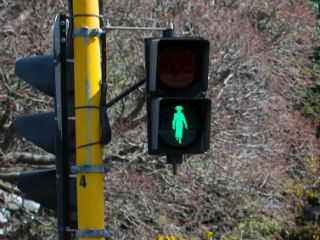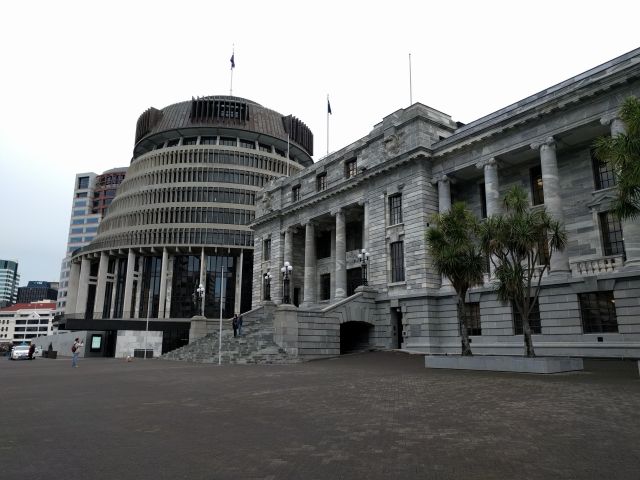When we arrived in New Zealand 9 months ago, at the end of September, kiwis were in limboland. A general election had taken place but no political party had won an outright majority in their form of proportional representation, known here as MMP. Several weeks after our arrival, it was Winston Peters of the NZ First party who was the “king maker”, deciding to join with the Labour party and the few seats won by the Green party to form the next government. This placed the National party, who had actually won more seats than Labour, as the loyal opposition.
So it was with this backdrop that we took the opportunity while here in Wellington, the capital of Aotearoa New Zealand, to both take a tour of parliament and also to sit in the public gallery to get a taste of this form of adversarial governance. It is the role of opposition to keep the ruling party to account for its actions.
Kiwis are a proud nation. They were the first country in the world to have un iversal suffrage and are currently honoring the 125th anniversary of women being allowed to vote. Even the green walk signals around the Parliamentary Buildings are celebrating with the silhouette of Kate Sheppard, NZ’s most famous suffragette.
iversal suffrage and are currently honoring the 125th anniversary of women being allowed to vote. Even the green walk signals around the Parliamentary Buildings are celebrating with the silhouette of Kate Sheppard, NZ’s most famous suffragette.
Kiwis are also proud of their egalitarianism. While they inherited the bicameral system of parliament from Westminster, in 1951 they scrapped the upper, unelected house, and are now unicameral. The House of Representatives meets in the debate chamber of the Parliament to do its business. To emphasize the independence of this chamber, the Queen, as head of this constitutional monarchy, or her representative in the Governor-general, cannot enter the debate chamber. While the Queen has to sign off on all the laws, NZ would quickly declare itself a republic if she ever were to decline to do so.

NZ’s Parliamentary Buildings: On the left is the 1960’s era “Beehive” — the executive “wing” of Parliament where the prime minister and other MPs of the ruling party have their offices. On the right is the Parliament House, where we went to the debate chamber to watch the government at work.
If you have ever watched “Questions to the Prime Minister” from Westminster in the UK, then you have a pretty good idea what we experienced in the 90 minutes we spent in the public gallery yesterday. There was much heckling, barbed comments, and calls of “order, order” from the Speaker of the House. Quite entertaining, but beneath the entertainment, the various parties are holding the minsters to account for their actions. And the ruling coalition often disparaged the criticisms from the opposition by placing their policies against those of the opposition Nationals who had ruled for the previous 9 years. Since the Prime Minister, Jacinda Ardern (Labour party), is out on maternity leave, deputy prime minister Winston Peters (New Zealand First party) fielded the initial questions. Winston is old and long in the tooth, and he batted away the questions of the opposition with ease. Quite amusing to watch.
It was striking to see the number of women in parliament with 46 of the 120 seats. This is the highest proportion in the 125 years since universal suffrage. A fitting tribute to honour the anniversary. We also learned that the Maori are in general support of the constitutional monarchy because the 1840 Waitangi Treaty was signed by the Crown and the native tribes. The fear is that doing away with the monarchy might neuter the treaty and the ongoing work to resolve treaty differences. Many of the iwi (tribes) have settled their differences and to date have received $2.2 billion in restitution. Some of those dollars have been used to build, for example, the “living building” we visited in an earlier blog.
 Among the many parts of the buildings we toured, we visited the room in which the Select Committee for Maori Affairs sits. It is fitted out with wood carvings (by men) and weavings (by women) similar to those we have seen in marae. (Not our pic because we had to leave all electronic devices behind at security.) Kiwis are actively exploring what it means to be a bicultural society. Maori are claiming their heritage; it is filtering into the general populace; the use of te reo, the Maori language, is everywhere. It is changing society here. While it is by no means perfect, it is a hopeful experiment in restoring the wrongs of colonialism. The experiment would be far harder without the 1840 Waitangi Treaty, despite its deliberate mistranslation by the settlers into te reo.
Among the many parts of the buildings we toured, we visited the room in which the Select Committee for Maori Affairs sits. It is fitted out with wood carvings (by men) and weavings (by women) similar to those we have seen in marae. (Not our pic because we had to leave all electronic devices behind at security.) Kiwis are actively exploring what it means to be a bicultural society. Maori are claiming their heritage; it is filtering into the general populace; the use of te reo, the Maori language, is everywhere. It is changing society here. While it is by no means perfect, it is a hopeful experiment in restoring the wrongs of colonialism. The experiment would be far harder without the 1840 Waitangi Treaty, despite its deliberate mistranslation by the settlers into te reo.
The only thing we regret is that we didn’t get a chance to see the prime minister, Jacinda Ardern. She’s still on maternity leave, having been only the second elected leader in history to have a baby while in office. (10 points to anyone who knows who was the first!)

Patti and I, while, as you were, at Wellington Friends Centre, also visited a debate in Parliament. We love your blogs that describe so well NZ cultures. I continue to receive NZ Listener and NZ Geographic to keep informed. This blog reminded me of a recent article re: te reo: https://www.noted.co.nz/currently/social-issues/politicians-making-effort-to-learn-te-reo-maori/?utm_source=Sailthru&utm_medium=email&utm_campaign=LISTENER_newsletter_12-07-2018&utm_content=Final&utm_term=list_nzlistener_newsletter
LikeLike